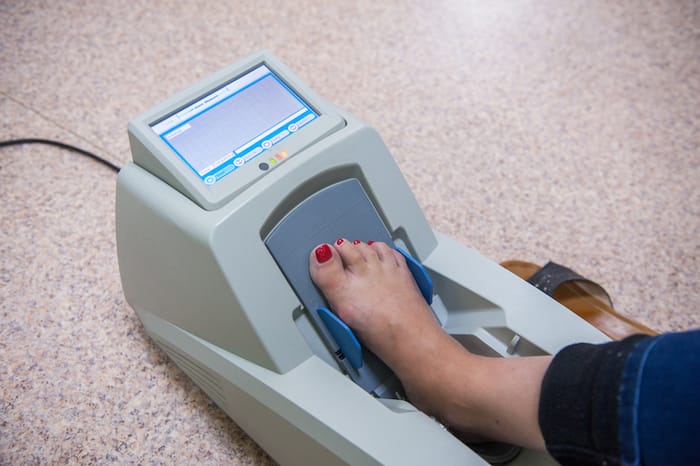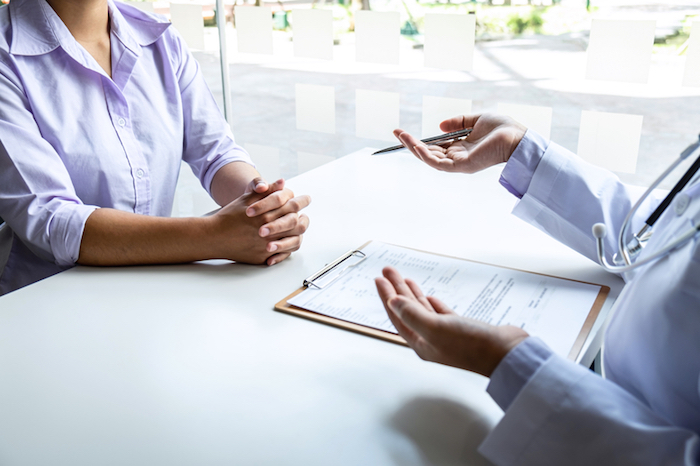- Calls to this hotline are currently being directed to Within Health or Eating Disorder Solutions
- Representatives are standing by 24/7 to help answer your questions
- All calls are confidential and HIPAA compliant
- There is no obligation or cost to call
- Eating Disorder Hope does not receive any commissions or fees dependent upon which provider you select
- Additional treatment providers are located on our directory or samhsa.gov
Bone Loss From Eating Disorders
Without proper treatment, people with eating disorders can develop severe bone loss, leading to osteoporosis. Sometimes, the problem isn’t reversible and can persist even when the person has addressed their eating disorder.
Bone loss is most closely tied to anorexia. About 30% of people with anorexia have osteoporosis. And up to 90% of them have bone thinning (osteopenia) that can lead to osteoporosis.[1] But people with bulimia nervosa can develop the problem too.
Whether you’re wondering about anorexia and osteopenia or bulimia nervosa and osteoporosis, know this. Treating your eating disorder is the best way to help your bones. And the sooner you get started, the better.
What Is Osteoporosis?
Bones are in a state of constant flux. Old bone is reabsorbed, and new bone is laid down by bone cells called osteocytes.
During childhood and early adolescence in women, sometime after the onset of menses in puberty, the osteocytes lay down new bone faster than it is being absorbed, reaching peak bone mass at about 15 years of age.
Bone production slows down but continues to about age 30. After that, bone mass shrinks about 1% annually.
An eating disorder speeds up this natural process in two ways:
- Malnutrition: When you’re not eating enough, your body stops producing some types of hormones. Low estrogen, particularly important in children and adolescents who are still growing, leads to decreased bone production and increased bone absorption.
- Stress: Because being in a state of starvation is stressful, the brain triggers a red alert to the rest of the body in the form of elevated levels of cortisol pumped out by the adrenal glands that also accelerate bone absorption.
Osteoporosis sets in when bone is absorbed quicker than new bone is being created. In the United States, more than 53 million people have it now or are at high risk of developing osteoporosis.[2]
Related Content On the Effects of Eating Disorders On Body Systems
- Nervous
- Respiratory
- Circulatory
- Digestive
- Musculoskeletal
- Integumentary
- Reproductive
- Endocrine
- Immune
How Eating Disorders & Bone Loss Are Related
Women with eating disorders, particularly anorexia, are at high risk for osteoporosis. About three-quarters of women who meet the criteria for anorexia nervosa (those who are 85% or less of their ideal body weight) show some evidence of bone mineral deficiency.
About half of them might develop osteoporosis even after they restore their weight, resume their menses, and are within a healthy weight range. These women have brittle bones due to their disease.
Young women with anorexia are less likely to reach their lifetime peak bone density. They move through life with a bone deficit, and they’re at increased osteoporosis risk for the rest of life as a result.[2]
Does anorexia cause joint pain? Not exactly. But women with thin bones can develop very painful problems. They may have the following issues:
- Injuries: They may fall, break a hip, and need joint replacement
- Bone collapse: They may experience bones collapsing, causing excruciating, constant pain.
- Repeat fractures: The slightest, most unexpected movement or event might trigger a fracture or broken bone in a woman recovering from an eating disorder with osteoporosis.
- Height loss: They may notice that they are 3 or more inches shorter than they used to be because their spinal columns have collapsed.
Anorexia is associated with a threefold increase in the lifetime risk of a bone break. Up to 57% of women with anorexia break at least one bone during life.[3]
Any woman with unexplained broken bones should be tested for osteopenia or osteoporosis. The results could help her change her life in meaningful ways.
Diagnosing Bone Loss: How Testing Works
Recognizing the problem early on is crucial to treating osteoporosis.
There are laboratory tests available that measure the following:
- Serum estradiol
- Calcitonin
- Type-1 procollagen carboxy-terminal propeptides
- Serum type-1 collagen carboxy-terminal telopeptide
The best diagnostic tool for patients at high risk for bone loss is to measure bone density using a special x-ray test known as a DEXA (dual-energy x-ray absorptiometry) scan of the hip and lower spine. This test is reliable, rapid, and painless.
Sometimes getting the results of a DEXA scan is concrete data that can help the patient recognize the damage the eating disorder is doing to her body. She might realize that she needs to accept help, or the problem will only worsen.
Going over the details of the DEXA scan with an eating disorder treatment team can be helpful in formulating a comprehensive care plan to address any bone loss concerns and prevent further damage in the future.
Can Osteoporosis Be Reversed?
Addressing the root of the problem, which is the eating disorder, is essential to reversing the course of bone loss and healing from osteoporosis.
Your treatment team can treat your eating disorder in the following types of programs:
- Intensive outpatient program (IOP)
- Partial hospitalization program
- Residential eating disorder program
- Inpatient level of care in a hospital
Your team can help you restore your weight, and when you’re feeling better, supplements can help you build bone.
Supervised exercise may help too. Moderate exercise like walking, gardening, or yoga could help, but your program shouldn’t be allowed to progress to compulsive, prolonged strenuous exercise.
Researchers say close, careful, supervised programs can help people rebuild bone, even in people with severe bone loss.[4] Sometimes, problems are completely reversed.
But if you don’t treat your eating disorder, your bones will continue to thin. And your hormone deficiencies will keep your body from building new tissues. Take poor test results, or a painful fracture, as an incentive to get the help you need to live a healthier and stronger life.
References
- Factors Influencing Bone Loss in Anorexia Nervosa: Assessment and Therapeutic Options. RMD Open. https://rmdopen.bmj.com/content/5/2/e001009. November 2019. Accessed July 2022.
- What People with Anorexia Nervosa Need to Know About Osteoporosis. National Institute of Arthritis and Musculoskeletal and Skin Diseases. https://www.bones.nih.gov/health-info/bone/osteoporosis/conditions-behaviors/anorexia-nervosa. November 2018. Accessed July 2022.
- Anorexia Nervosa and Osteoporosis: Pathophysiology and Treatment. Journal of Bone Metabolism. https://www.ncbi.nlm.nih.gov/pmc/articles/PMC6746661/. August 2019. Accessed July 2022.
- Osteoporosis Recovery in Severe Anorexia Nervosa: A Case Report. Journal of Eating Disorders. https://jeatdisord.biomedcentral.com/articles/10.1186/s40337-019-0269-8. 2019. Accessed July 2022.



